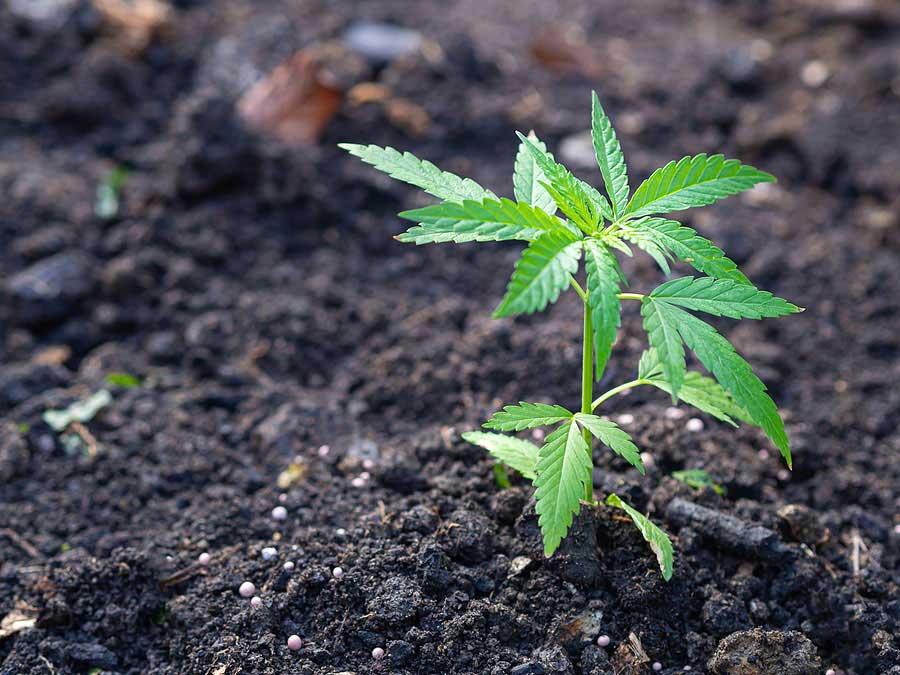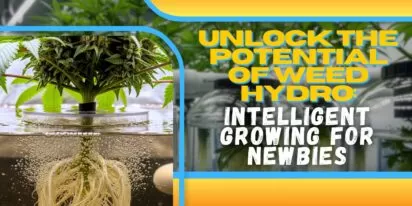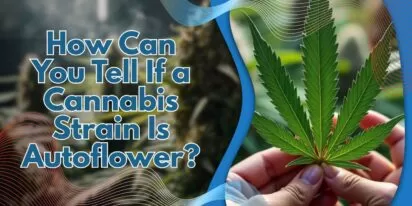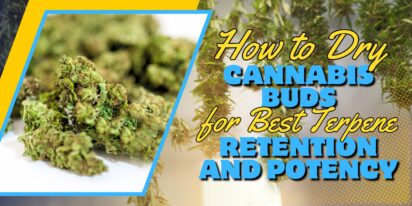Are You 21 Or Over?
YesOr
No By clicking yes, you certify that you are over 21 years old. By using this website, you agree to our legal disclaimer.Table of Contents

It can be a satisfying and therapeutic experience to cultivate marijuana plants. Marijuana often has various criteria and unique treatment instructions, close to the manner you maintain for crops. Any novice learns a lot of confounding and daunting knowledge from numerous websites. It still leaves them asking how to grow the correct kind of weed seeds.
There are more than 2000 marijuana strains, and gardeners may select between cultivating Indica, Sativa, or a hybrid marijuana plant. You must also select the correct kind of climate and soil, depending on the kind of plant or strain when you choose to produce. Also, there are different forms of tempering their development, and in different garden conditions, these plants may thrive.
The mechanism in which a new crop starts to emerge from the seed is germination. The first step in growing your cannabis cultivation is often known as the ‘popping’ germination. Cannabis Seeds can be obtained from several sources, and their consistency can differ.
It takes three things to germinate your marijuana seed: warmth, darkness, and moisture. We also provided a step by step overview of the most common cannabis seed germination process. To start germination, there are just only a few materials needed. But make sure that you have older, unregulated seeds or some that are partly dried out before continuing. Seeds that are younger and fresher do not need responsive germination and may be directly planted in a developing medium.
Step 1: Take 4 layers of paper towels and use filtered water to soak them. The sheets must be wet, but they should not run off with extra warmth.
Step 2: Take the two of the towels of paper and put them on a tray. Then, remove the weed seeds from each other at least an inch away and cover each with the two remaining sets of paper towels saturated with water.
Step 3: Take another tray to build a dark, safe area and turn it over to covering the seeds.
Step 4: Make sure the environment they’re held in is hot, around 70-90°F. Once these steps have been taken, it’s waiting time. You should inspect the paper towels and ensure they’re still soaked, so if they seem to have been losing the moisture, you should add more water and keep the seeds healthy.
Many seeds sprout very easily, although others can require more days. If the seed breaks and a new sprout emerges, you realize the seed has germinated. That’s the taproot, that would become the plant’s main core, and seeing it is a symbol of effective germination. Keeping this area sterile is essential, so don’t contact the seed or taproot because as the seed starts to break.
After the seeds have started growing they need to be planted. If you have used a form of germination that allows you to transfer the sprouts, as the taproot is quite delicate, do that gently. You wouldn’t want it to be touched. It will live whether you hit it or break it, but it will certainly stunt the growth of your plant. Drop the white root downward while planting. In the growing medium, around half an inch to an inch should be positioned (knuckle deep). Just below the surface should lie the top of the seed. Cover gently and encourage the seedling to burst through the soil for about two weeks (10 days highest possible). It could appear on the same day, but if it did not peek out for 10 days, it certainly did not thrive.
Do not panic if the seed is planted upside down unintentionally. Nature has a way where it will figure out itself. As long as there’s ample space for the roots to finally expand down, they can. Give him a little time to let him do his thing! Germination doesn’t need to be complicated. Are you ready for growth to begin? All begins with the proper seeds.
The time that green leaves cross, the photosynthesis of light starts in earnest. The plants are starting to metabolize, as well as the vegetative process has started.
Indoors: Lamps are adjusted to a light regime of 18 hours a day, 6 hours a night. It doesn’t need to sync with the real hours of daylight, you could adjust it to fit you at periods of the day. Loading electrical machinery can save you a great deal of money during off-peak hours.
Inorganic soil, the plants are satisfied or nutrients built for the vegetative process are fed to them. Often fan-forced breezes bring temperatures under check and make your young plants healthier. Exotic methods may be used to incorporate carbon dioxide into the air. Low-stress preparation and scragging may be used to improve indoor weed projected growth and flower production.
Outdoors: As daytime temperatures continue to rise through spring and then into summer, weed expands exponentially. During the vegetative process, infinite root room and strong genetics will see plants grow to 3 or 4 meters.
During the entire growth cycle, most contemporary plants are constantly topped and under-shucked. This promotes an even canopy that during the bloom process can fill with homogeneously sized buds. Although there are more than 12 hours of sunshine, weed can keep vegetating. The more you are from the equator, the less vegetation period your marijuana would have until it begins growing.
For the cannabis plant, blooming, planting, and budding both apply to the same process of development. As aromas begin to produce, the next few months are going to be exciting times. Unique flower arrangements that are relevant to your preference of strain are now beginning to appear. There are distinctive chapters in the flowering process that are common to all cannabis plants and begin when the foliage stops.
A notable shift in the development cycle arises at the very outset of the flowering process. The branch development starts to zig-zag and compact with little space between branches, instead of the striving and stretching symmetry of plants. There is a rather clear distinction.
In all plants, albeit for varying periods, flowering follows the same steps. Weeks before a long maturing Sativa, a fast Indica is cured and in the pipe. Proper flowers may begin to develop soon after differentiation. Calyxes will appear rapidly forming pistil-covered puffballs at branch internodes. In the young trichomes mostly on calyxes, pistils, and leaves surfaces, several desired resins are still developing.
Along with their spike, the puffballs of calyxes continue to extend. New fluorescent clusters and bud-specific leaves allow room for this. These latest leaves are thicker, narrower, sometimes deeply crinkled, and surrounded by trichomes, unlike sugar leaves. The swelling flower clusters gradually partly submerge them. These flower clusters multiply throughout the weeks and form large colas coated in swollen trichomes of resin. The calyxes as well as the trichomes expand with vast amounts of suitable resins remaining to grow more. Complete ripeness approaches soon.
Nutrients will be neglected during the past few weeks and your crops would be washed out of safe water. This assures a pure nutrient-free flavor and constructed salt aftertaste. The way to harvest is not fixed. Be comely and grow by doing so. Some may damp trim that extracts all the leaves when the plant is still intact, and more breaks down the plant. Supposed to hang branches to dry on a drying rack or holding single buds. Only after harvesting can some cut the large sugar leaves and hang the entire plant. There have been no fixed guidelines but for cautious handling. You want as least as possible to disrupt the fragile trichomes.
Dry your buds in a nice, dark position with very little moisture. Preferably, this is a very long phase that can require a minimum of 2 weeks. Small branches can quickly break when dry. There would also be slightly fluid dense branches. The chlorophyll has deteriorated and colors depending on species have been substituted with the green of development. As the bud’s true dry colors develop, tan, light green or even deep blue and purple will appear.
For the first 2 weeks, release the top or “burp” the container once a day. This activates built-up moisture that will cause your buds to mold. Only burp the container once a week once the flowers are dry to the touch. You don’t want to ruin weeks of diligent work with a lack of focus.
Now that you have reached the end of this growing guide, we hope that you’ll have a successful growing journey. Give us feedback and show us your beautiful buds after following all the steps. Happy planting!

Curious about growing weed in a healthy, effective way? Welcome to the realm of weed hydro! This method uses water instead of soil, delivering n

Peyote Zkittlez is a unique cannabis strain that has quickly gained dedicated followers among enthusiasts and patients alike. Its parentage—Zk

As growers, we want strains that work well, are strong, and are of good quality. Autoflowering cannabis strains are a big step forward for both

Pot growers always ask the same basic question: How much weed does a weed plant produce? The answer is complex and depends on a multitude of var

Ever had the room spin after a few hits? You're not alone. Figuring out how to prevent getting dizzy high can make your cannabis experience a wh

Drying cannabis properly is a critical process in preserving the plant's full aroma and flavor and its psychoactive abilities. Tampering with th

Ever caught yourself a bit too high and all of a sudden in need of being normal? Whether you're heading out for munchies or bumping into someone

Looking for sage advice on how not to get pinched with weed without batting an eye? Attempting to protect your stash from gossipy roommates, sno

Nutrient lockout, also known as nutrient binding or chemical antagonism, is a significant issue in cannabis cultivation that negatively impacts

Germination is the most critical initial stage in growing healthy, high-quality cannabis plants. During germination, the dormant seed becomes a
Are You 21 Or Over?
YesOr
No By clicking yes, you certify that you are over 21 years old. By using this website, you agree to our legal disclaimer.
Excellent blog here Also your website loads up very fast What web host are you using Can I get your affiliate link to your host I wish my web site loaded up as quickly as yours lol
Your writing is not only informative but also incredibly inspiring. You have a knack for sparking curiosity and encouraging critical thinking. Thank you for being such a positive influence!
Simply wish to say your article is as amazing The clearness in your post is just nice and i could assume youre an expert on this subject Well with your permission let me to grab your feed to keep updated with forthcoming post Thanks a million and please carry on the gratifying work
Somebody essentially lend a hand to make significantly articles Id state That is the very first time I frequented your website page and up to now I surprised with the research you made to make this actual submit amazing Wonderful task
Your blog is a beacon of light in the often murky waters of online content. Your thoughtful analysis and insightful commentary never fail to leave a lasting impression. Keep up the amazing work!
Thank you for the auspicious writeup It in fact was a amusement account it Look advanced to more added agreeable from you By the way how could we communicate
Your blog is a constant source of inspiration for me. Your passion for your subject matter shines through in every post, and it’s clear that you genuinely care about making a positive impact on your readers.
Your blog is a constant source of inspiration for me. Your passion for your subject matter is palpable, and it’s clear that you pour your heart and soul into every post. Keep up the incredible work!
Your articles never fail to captivate me. Each one is a testament to your expertise and dedication to your craft. Thank you for sharing your wisdom with the world.
Your blog is a testament to your dedication to your craft. Your commitment to excellence is evident in every aspect of your writing. Thank you for being such a positive influence in the online community.
Your writing has a way of resonating with me on a deep level. I appreciate the honesty and authenticity you bring to every post. Thank you for sharing your journey with us.
Your blog is a true gem in the world of online content. I’m continually impressed by the depth of your research and the clarity of your writing. Thank you for sharing your wisdom with us.
Hi i think that i saw you visited my web site thus i came to Return the favore Im attempting to find things to enhance my siteI suppose its ok to use a few of your ideas
Somebody essentially help to make significantly articles Id state This is the first time I frequented your web page and up to now I surprised with the research you made to make this actual post incredible Fantastic job
Usually I do not read article on blogs however I would like to say that this writeup very compelled me to take a look at and do so Your writing taste has been amazed me Thanks quite nice post
Your blog has quickly become one of my favorites. Your writing is both insightful and thought-provoking, and I always come away from your posts feeling inspired. Keep up the phenomenal work!
Every time I visit your website, I’m greeted with thought-provoking content and impeccable writing. You truly have a gift for articulating complex ideas in a clear and engaging manner.
Hey there You have done a fantastic job I will certainly digg it and personally recommend to my friends Im confident theyll be benefited from this site
I have read some excellent stuff here Definitely value bookmarking for revisiting I wonder how much effort you put to make the sort of excellent informative website
Nice blog here Also your site loads up very fast What host are you using Can I get your affiliate link to your host I wish my site loaded up as quickly as yours lol
What i do not understood is in truth how you are not actually a lot more smartlyliked than you may be now You are very intelligent You realize therefore significantly in the case of this topic produced me individually imagine it from numerous numerous angles Its like men and women dont seem to be fascinated until it is one thing to do with Woman gaga Your own stuffs nice All the time care for it up
Your blog is a beacon of light in the often murky waters of online content. Your thoughtful analysis and insightful commentary never fail to leave a lasting impression. Keep up the amazing work!
Your blog is a breath of fresh air in the often stagnant world of online content. Your thoughtful analysis and insightful commentary never fail to leave a lasting impression. Thank you for sharing your wisdom with us.
Your blog is a beacon of light in the often murky waters of online content. Your thoughtful analysis and insightful commentary never fail to leave a lasting impression. Keep up the amazing work!
Usually I do not read article on blogs however I would like to say that this writeup very compelled me to take a look at and do it Your writing style has been amazed me Thank you very nice article
Your writing has a way of resonating with me on a deep level. I appreciate the honesty and authenticity you bring to every post. Thank you for sharing your journey with us.
This hydroponics guide is quite the buzz, seriously! Who knew growing weed without dirt could be so complicated yet potentially rewarding? The breakdown of systems like DWC and NFT is helpful, though I suspect my cat might confuse the air pump for a toy. The idea of cleaner buds is tempting, especially since explaining hydro weed to my non-growing friends might get messy. And the bit about potential dizziness from hydro weed? Perfect, now I have an excuse for why I always stumble a bit after a grow session. Still, the promise of faster grows and higher yields is hard to ignore, even if it means more trips to the pH meter than to the coffee shop. Overall, a cultivating read for the curious grower!